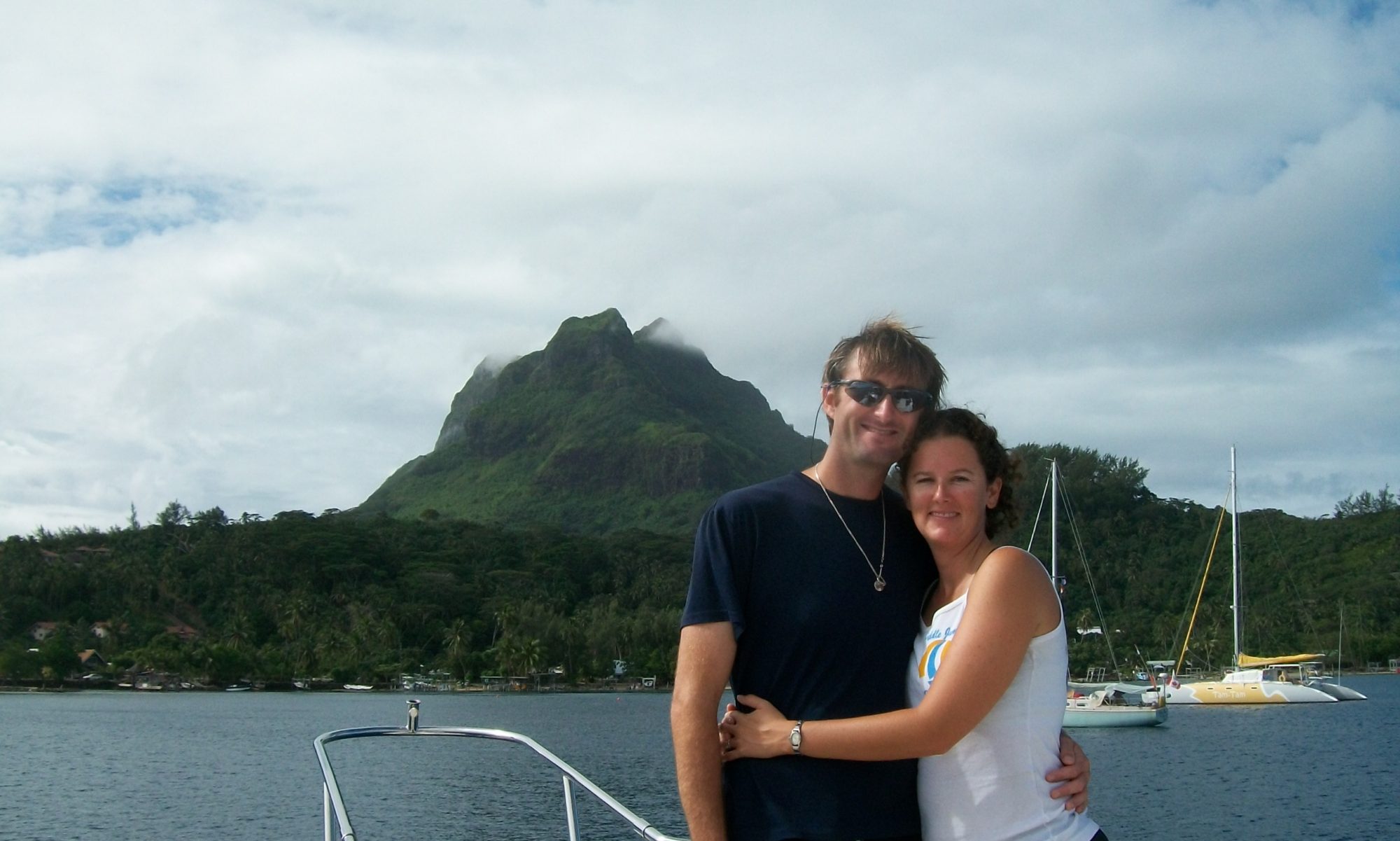Tahiti, Society Islands, French Polynesia
After some really great adventures, some terrifying moments and only one major “first aid incident“ it was time to say goodbye to mom and once again become a group of two.
One last piece of Polynesian tourism to explore before she departs though.
and then it was time to continue to our next ship and our fall to the “dark side” of cruising: Power Boating.
Many of you may think, “So what? It’s a boat. Floats on the water. Goes slow. No difference.” Some of you may even have already realized that almost every single sailboat out there has an engine and is therefore, at one time or another, a ship under artificial propulsion (aka powerboat). But to many cruisers the difference between “stinkpots” and “blowboats” is akin to a Prius driver all of a sudden going out and trading in for an H3.
Additionally, many sailors believe that in order to maintain their ancient history of maritime lore and salty seagoing skills they must have a ship that actually is powered by an overgrown bedsheet. It is amusing to note this belief exists despite the fact that that the overwhelming majority of modern maritime professionals work on powerboats and that when a sailboat needs to be rescued, it is typically a powerboat that does the job.
Personally, upon experiencing life on both sides of the great divide, we’re pretty sure these beliefs are mostly borne out of jealousy of the fact that powerboaters can have fresh chilled ice made on demand whenever they want. Seriously, ice. It’s a big deal out here. You don’t understand how big a deal this is until you show up at a “bring your own drinks party” with a bag of ice and everyone considers you their personal hero and you get beer for ice. And it doesn’t have to be a lot of ice either. Because you see, powerboats generate, you guessed it, power. Power translates into ice, cold drinks, charged computers, TV every night, a wine cooler, etc.
There are lots of pros and cons to each type of vessel. Sailboats are great because you can get from point A to point B without spending very much money, since you only need to run your engine or generator for an hour or two a day to keep your batteries charged up so you can use the radio and keep your ice cream cold. (Hey, we’re not savages here 
As for us, we haven’t had a cruising powerboat experience that didn’t also include military service, so this should be an interesting change. Greg is looking forward to actually having a charged computer!
Which would you pick?



Sailing of course!